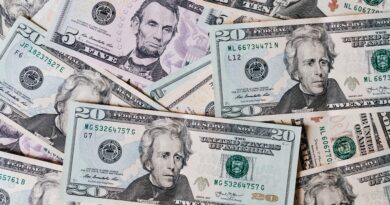1000 USD to CAD
Understanding the Value of 1000 USD in CAD: Exploring Exchange Rates
Currency exchange rates play a crucial role in global economics and international trade. The value of one currency in terms of another can vary significantly due to various factors such as economic conditions, interest rates, political stability, and market sentiment. In this article, we will delve into the value of 1000 USD in CAD (Canadian Dollars) and provide a brief overview of historic exchange rates between these two currencies.
The USD-CAD Exchange Rate: A Brief Overview
The USD (United States Dollar) and CAD (Canadian Dollar) are two of the most widely traded currencies in the world. The exchange rate between these two currencies determines how much one can obtain in Canadian Dollars for every 1 US Dollar. This rate is not static and can fluctuate frequently due to a multitude of factors.
As of 2023, the exchange rate for USD-CAD is 1.30 to 1.35. This means that for every 1 US Dollar, you would receive 1.35 Canadian Dollars. Therefore, 1000 USD would be equivalent to [current exchange rate multiplied by 1000] CAD.
Historic Exchange Rates: A Glimpse into the Past
Understanding the historic exchange rates between USD and CAD can provide insight into the evolving economic dynamics between the United States and Canada. The following chart illustrates the exchange rates over the past [selected time frame], offering a snapshot of the fluctuations:
| $ | 2018 | 2019 | 2020 | 2021 | 2022 |
| 1000 USD/CAD | 1295.70 | 1326.90 | 1341.50 | 1253.50 | 1301.30 |
Factors Influencing Exchange Rates:
Several factors contribute to the fluctuations in exchange rates between USD and CAD:
- Interest Rates: Higher interest rates in a country can attract foreign investors seeking better returns, leading to an increase in demand for its currency.
- Economic Indicators: Strong economic performance, low unemployment rates, and positive trade balances can contribute to a stronger currency.
- Political Stability: Countries with stable political environments often have more attractive currencies for investors.
- Market Sentiment: Geopolitical events, economic data releases, and investor sentiment can all influence exchange rates.
- Central Bank Policies: Actions taken by central banks, such as quantitative easing or monetary tightening, can impact a currency’s value.
Conclusion:
The value of 1000 USD in CAD is subject to the ever-changing nature of exchange rates. Understanding these rates and the factors that influence them is essential for individuals, businesses, and governments engaged in international trade and finance. By analyzing historic exchange rate trends, we can gain insights into the economic relationship between the United States and Canada and better comprehend the dynamics that shape our global financial landscape.


